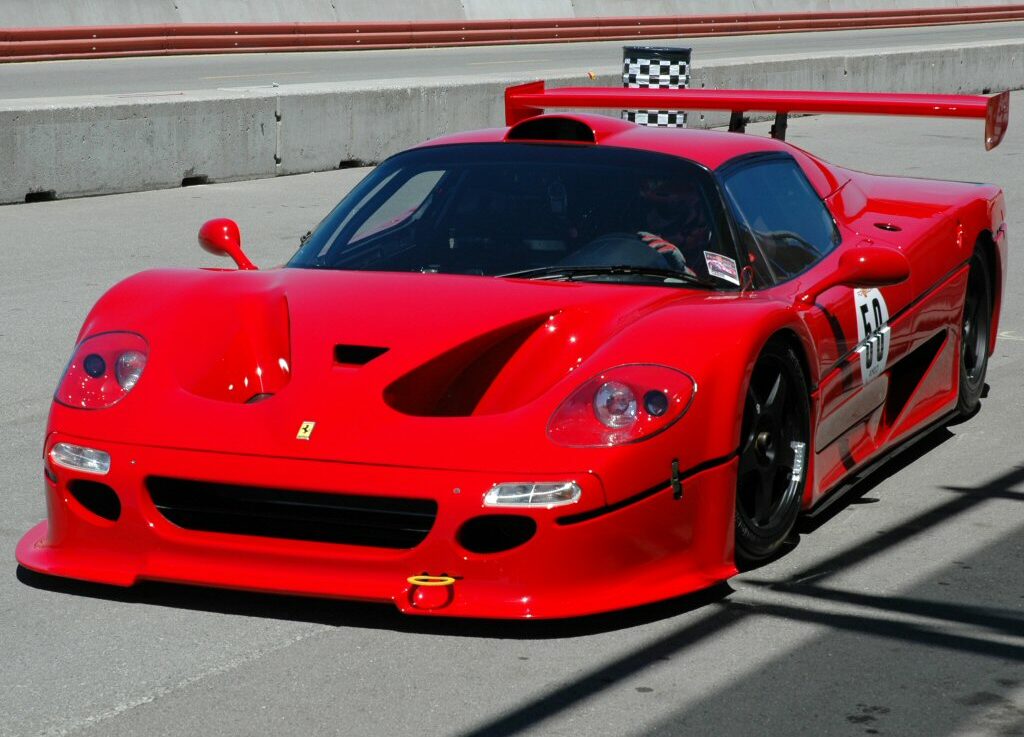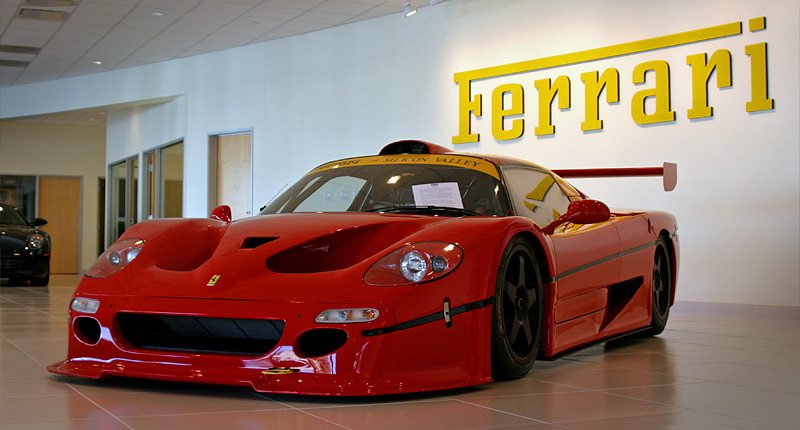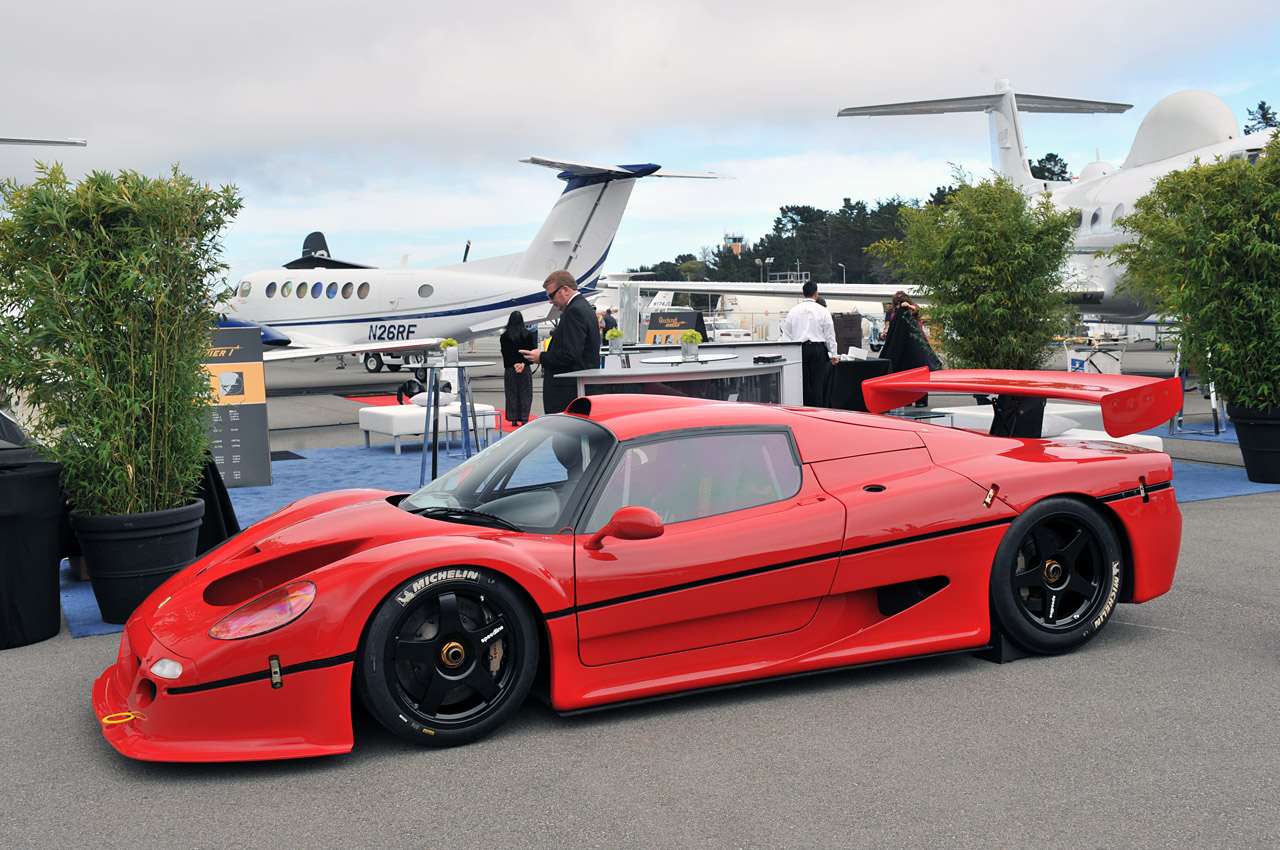1996 Ferrari F50 GT
To celebrate Ferrari’s golden anniversary, the F50 was released and sold as a limited edition supercar. It followed the footsteps of the 288 GTO and F40 by focusing on motor sports engineering with little concessions for passenger comfort.
A highlight of the F50 was its rigidity. It had no front, rear or engine subframes and featured a solid mounted chassis, with little rubber in the suspension system. Attached directly to the central tub, the engine and transmission doubled as the rear support structure and held the rear suspension components.
With good aerodynamics and braking to complement its stiff chassis design, and having the necessary production figures to meet homologation requirements, it seemed only fitting for the F50 to continue the legacy of the F40 GTE. That is, contest the BPR Global GT Endurance Series, a precursor to FIA GT. Not surprisingly, Ferrari flirted with this idea and began a development of the F50 GT.
F50 GT chassis number 001 was sent to Micholelotti. They were the same company that assisted Ferrari in developing the F40 GT and the 333 SP prototype racers and were commissioned by Ferrari to modify the F50 body. Micholelotti removed the integrated rear wing and replaced it with a much larger adjustable unit sitting on a new flat deck. The front end was modified to feature much larger air apertures and a lower more pronounced front splitter. Other changes included a fixed roof with engine intake and a metal cover for the engine bay.
Ferrari worked on the engine and chassis of 001 to achieve a better power to weight ratio. They drastically reduced its weight to 1800 dry pounds and increased horsepower by 200 to reach 750 at 10500 rpm. To cope with the power, a sequential 6-speed transmission was introduced with a much stronger carbon clutch.
Other chassis improvements included a more adjustable suspension, carbon fiber disc brakes, twenty inch Speedline wheels, a massive rear diffuser and a much lower ride height. The interior received a gutting treatment, resulting in a single racing seat, concise digital display and many more engine mototronics, including a Magneti Marelli Compeition system.
Preliminary results around the Fiorano track lapped the F50 GT faster then the 333SP Le Mans prototype, albeit with a 4.0 liter engine in the 333.
The racer that never raced.
For reasons which Ferrari never mentioned, the F50 race program was halted after five tubs and one complete car had been made. Racing a million dollar car for the GT series seemed reason enough to quit, but we have read diverting resources away from Formula One racing and Bernie Ecclestone were to blame. While stiff competition from Porsche, Mercedes Benz and Toyota were have also been mentioned, I believe competition wasn’t a factor detouring Ferrari from racing, more limited resources and money to develop the F50 GT alongside the F1 and 333SP cars.
Despite the fact that the GT never saw action on the track, we are thankful that Ferrari completed two more examples and sold all three cars to very specific clientele who were told not to race the cars in modern race series. Being such a limited version of an already limited series, the F50 GT is one of the most exclusive modern day supercars, and one of the great ‘could-have-beens’ in Ferrari history.
Specs & Performance
| submitted by | Richard Owen |
| engine | Modified Tipo F130A, 65 Degree Cast Iron V12 w/Dry Sump, Aluminum Heads |
| position | Stressed, Mid Longitudinal |
| aspiration | Natural |
| valvetrain | DOHC, 5 Valves per Cyl w/Varible Intake Manifold |
| fuel feed | Bosch Fuel Injection |
| displacement | 4700 cc / 286.8 in³ |
| bore | 85 mm / 3.35 in |
| stroke | 69 mm / 2.72 in |
| compression | 12.0:1 |
| power | 536.9 kw / 720.0 bhp @ 10500 rpm |
| specific output | 153.19 bhp per litre |
| bhp/weight | 793.83 bhp per tonne |
| torque | 520.0 nm / 383.5 ft lbs @ 8000 rpm |
| redline | 11000 rpm |
| body / frame | Carbon Fiber Body over Caborbon Fibre Tub Chassis |
| driven wheels | Mid Engine / RWD |
| front tires | Competition 27 / 65 / 18. |
| rear tires | Competition 30 / 70 / 18 |
| front brakes | Carbon Discs |
| f brake size | x 380 mm / x 15.0 in |
| rear brakes | Carbon Discs |
| r brake size | x 380 mm / x 15.0 in |
| front wheels | F 50.8 x 27.9 cm / 20.0 x 11 in |
| rear wheels | R 50.8 x 33.0 cm / 20.0 x 13 in |
| f suspension | Unequal Length A-Arms w/Push-Rod Actuated Coil Springs and Koni Dampers |
| r suspension | Unequal Length A-Arms w/Push-Rod Actuated Coil Springs and Koni Dampers |
| curb weight | 907 kg / 2000 lbs |
| wheelbase | 2580 mm / 101.6 in |
| length | 4578 mm / 180.2 in |
| width | 1986 mm / 78.2 in |
| height | 1092 mm / 43.0 in |
| transmission | 6-Speed Sequential w/3-Disc Carbon Clutch |
| gear ratios | :1 |
| top speed | ~379.8 kph / 236.0 mph |
| 0 – 60 mph | ~2.9 seconds |
Ferrari F50 GT1 Videos
Watch more Ferrari videos here
Ferrari F50 GT1 Pictures













